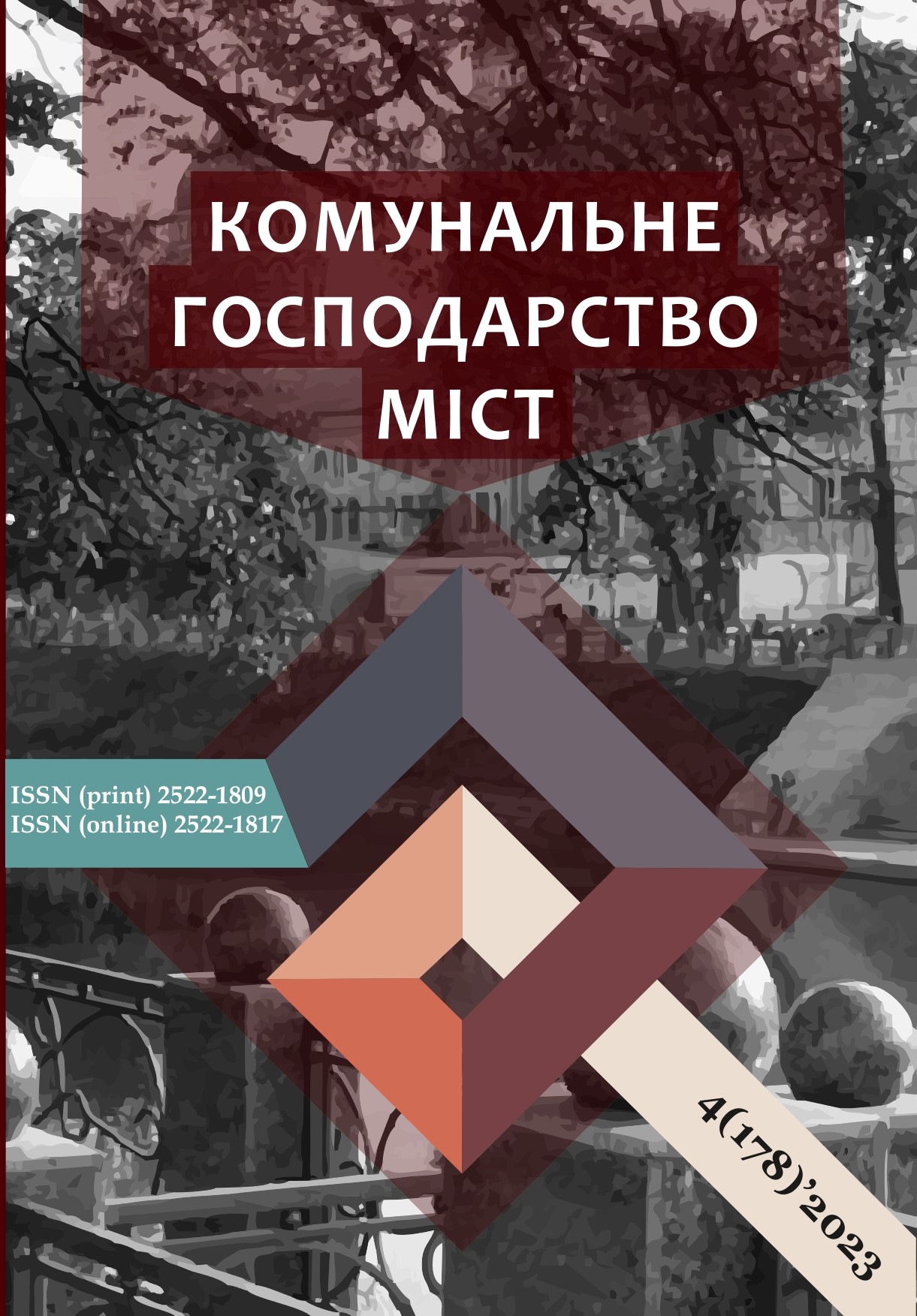GEOSPATIAL DISTRIBUTION OF CITY INFRASTRUCTURE FOR THE PRACTICAL APPLICATION OF HEAT PUMPS
DOI:
https://doi.org/10.33042/2522-1809-2023-4-178-113-117Keywords:
heat pump, cost-effectiveness of projects, water heating, geospatial search, alternative sources, waste water, urban infrastructure, secondary heatAbstract
Use of water resources and wastewater treatment on a global scale. For various areas of use, appropriate water quality and purification is required. But in connection with the ecological situation in various countries of the world and the economic situation, which is developing in 2023 and beyond, it is worth noting that it leads to a global emergency. Instability of wastewater treatment parameters in various regional and global basins. The obsolescence of water purification processes and mechanisms prompts humanity to search for new methods of purification and disposal of accumulated pollution.
The financial sector is experiencing a significant downturn and is pushing global stock exchanges into economic depression and the possible collapse of currency charters in the system of central banks. The change in the reserve currency and the value of currencies in the world financial sphere is already setting a new trend in the distribution and redistribution of economic markets. The further development of technology and science in general requires the search for new funding sectors, platforms for the use of financial niches and a globally accessible calculation and earning sector for scientists.
Heat recovery and wastewater treatment is becoming a key issue in the field of water resources. Among the local sources of purification, which are gaining great popularity and special need in our country. Biological processes of water purification are quite dependent on temperature changes. It has been observed that when there is a rapid drop in temperature over a period of several hours, the hydraulic retention of the CB acts as a buffer for the temperature in the tanks, resulting in the stabilization of the biological process.
In the research, the search for a project with a quick payback period and low cost with provision of hot water supply appears. Implementation of technologies for utilization of heat from the environment and income for the benefit of communities and condominiums. The further calculation of the project should have a tendency, regarding the universality and practicality of its implementation, to be economically competitive and to bring improvements to the public sector.
One of the first steps in the development of networks is the need for data. Work with data can be carried out in two ways: visualization and arrangement of data based on tabular forms in combination with existing maps, as well as with the development of a spatial display of objects, in combination with attributive data, for other operations and system interaction. Based on the data, it is possible to determine the location of boiler houses, CTP and ITP, as well as the distance of consumers from them. The distance between houses can serve as the main characteristic for dividing consumers into zones, which, in turn, will reflect the situation with high-quality provision of domestic hot water.
After analyzing the data, it was found that some houses contain several connections of DHW networks. HVP networks are a network of interconnected linear objects, with the help of which it is possible to determine the distance of objects, as well as to display the distribution of the load between consumers.
References
Wanner, O. (2009) Warmeruckgewinnung aus Abwasser. Wärmeaustauschverschmutzung: Auswirkungen und Gegenmassnahmen. Schriftenreihe der Eawag, 19, 62.
Frey, R. (2006) Energiestadt Lyss gewinnt Wärme aus Abwasser. GWA. Gas, Wasser, Abwasser, 3, 2.
Baek, N. C., Shin, U. C. & Yoon, J. H. (2005) A study on the design and analysis of a heat pump heating system using wastewater as a heat source. Solar energy, 78, 427-440. https://doi.org/10.1016/j.solener.2004.07.009
Elías-Maxil, J. A., Van Der Hoek, J. P., Hofman, J. & Rietveld, L. (2014) Energy in the urban water cycle: Actions to reduce the total expenditure of fossil fuels with emphasis on heat reclamation from urban water. Renewable and Sustainable Energy Reviews, 30, 808-820. https://doi.org/10.1016/j.rser.2013.10.007
Schitkowsky, A. (2011) Wäermerückgewinnung aus Abwasser - Beispele aus Berlin. SIEDLUNGSWASSERWIRTSCHAFT, I. F., ed. 3e. Internationales Symposium "Re-Water Braunschweig", 2011 Braunschweig, Germany. Technische Universiteit Braunschweig.
Frijns, J., Mulder, M. & Roorda, J. (2008) Op weg naar een klimaatneutrale waterketen. RIJKSWATERSTRAAT (ed.). Rijkswaterstraat, KWR, RIONED, STOWA.
Horne, J., Bois, B., Jordan, K., Kricun, A., Newton, J., Pedersen, T., Young, M., Leiby, A. & Snyder, G. (2008) Ensuring a Sustainable Future: an Energy Management Guidebook for Wastewater and Water Utilities. EPA, G. E. A. T. F. (ed.). Washington, D.C.: EPA, Global Environment and Technology Foundation.
Kizeev, M., Kunytskyi, M. (2022) Determining the temperature regime of wastewater in sewage networks using the "Tempest" program for the purpose of heat energy recovery. Technical sciences and technologies. 2 (28), 146-161. https://doi.org/10.25140/2411-5363-2022-2(28)-146-161
Downloads
Published
How to Cite
Issue
Section
License
The authors who publish in this collection agree with the following terms:
• The authors reserve the right to authorship of their work and give the magazine the right to first publish this work under the terms of license CC BY-NC-ND 4.0 (with the Designation of Authorship - Non-Commercial - Without Derivatives 4.0 International), which allows others to freely distribute the published work with a mandatory reference to the authors of the original work and the first publication of the work in this magazine.
• Authors have the right to make independent extra-exclusive work agreements in the form in which they were published by this magazine (for example, posting work in an electronic repository of an institution or publishing as part of a monograph), provided that the link to the first publication of the work in this journal is maintained. .
• Journal policy allows and encourages the publication of manuscripts on the Internet (for example, in institutions' repositories or on personal websites), both before the publication of this manuscript and during its editorial work, as it contributes to the emergence of productive scientific discussion and positively affects the efficiency and dynamics of the citation of the published work (see The Effect of Open Access).

